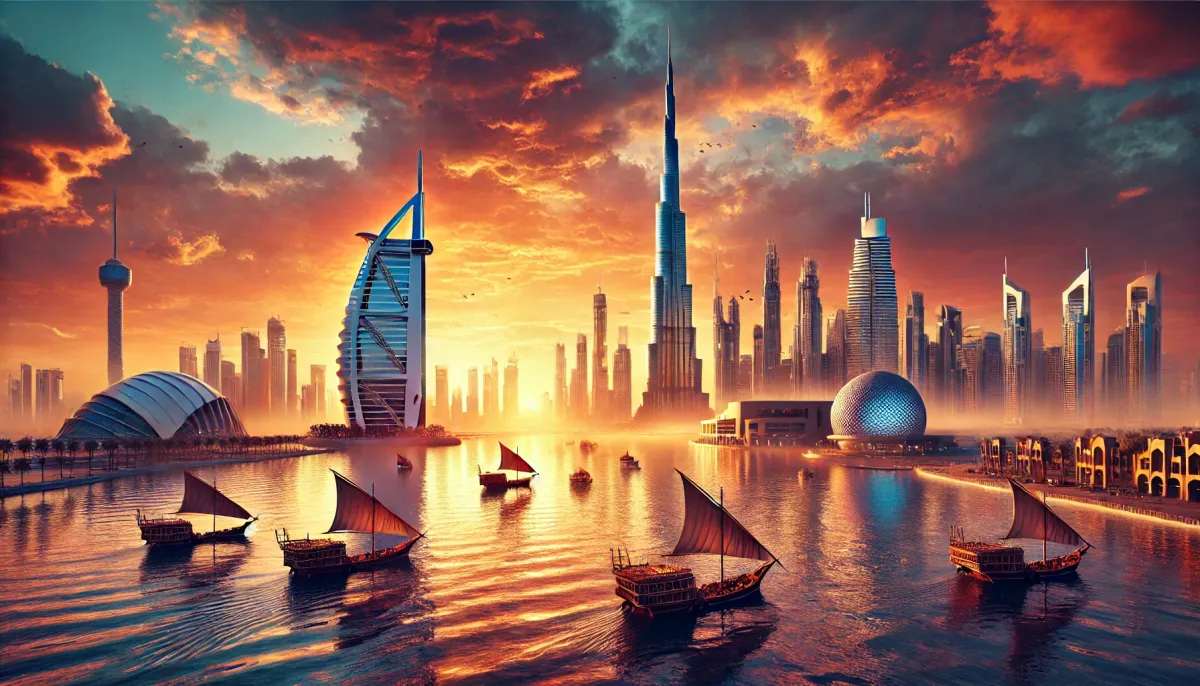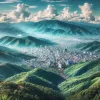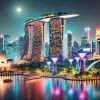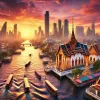Dubai. The name conjures images of towering skyscrapers, opulent shopping malls, and luxurious seven-star hotels. It's a city that boasts numerous world records, a testament to human ingenuity and extravagance. But beyond the headlines of lavish spending and over-the-top luxury, lies a city built on the edge of a vast, unforgiving desert. This stark contrast is what makes Dubai so fascinating, and why I recently journeyed there to experience its unique allure firsthand.
From Humble Beginnings to a Global Hub
Just 200 years ago, Dubai was a small fishing village nestled on the banks of Dubai Creek, its economy reliant on pearl diving and maritime trade. The discovery of oil in 1966 transformed this quiet village into a bustling city. However, limited oil reserves and scarce water resources forced Dubai to rethink its trajectory. Sheikh Mohammed bin Rashid Al Maktoum, then Crown Prince, envisioned a different future for Dubai – a world-class tourist destination and a haven for the wealthy. He embarked on a series of ambitious projects, each designed to capture the world's attention.
A City of Superlatives
His vision began with the Burj Al Arab, the world's first seven-star hotel, rising from the sea like a majestic sail. Then came the Dubai Mall, a shopper's paradise and home to the world's largest indoor aquarium and ski slope. These early successes paved the way for even more ambitious projects:
| Landmark | Description |
|---|---|
| Burj Khalifa | The world's tallest building, standing at a staggering 828 meters. |
| Dubai Fountain | The world's largest choreographed fountain system, captivating audiences with its mesmerizing displays. |
| Museum of the Future | A stunning architectural marvel showcasing cutting-edge technologies and exploring future possibilities. |
| Ain Dubai | The world's tallest observation wheel, offering breathtaking views of the city skyline. |
| Dubai Frame | A massive, gilded frame offering a unique perspective on old and new Dubai. |
These "firsts" and "largests" weren't just about bragging rights; they were a strategic move to put Dubai on the map. And it worked. Tourism boomed, and Dubai quickly became a global hub for finance and trade.
Man-Made Marvels and Environmental Concerns
Perhaps the most audacious projects are the Palm Islands, artificial archipelagos shaped like palm trees, extending Dubai's limited coastline. The most famous, Palm Jumeirah, is a testament to human ambition, hosting luxurious residences, pristine beaches, and the iconic Atlantis Hotel.
However, not all of Dubai's grand plans have come to fruition. The World Islands, a collection of 300 artificial islands shaped like a world map, faced significant challenges due to the 2008 financial crisis and environmental concerns. Many of the islands remain undeveloped, a reminder that even in Dubai, resources are not limitless.
The Other Side of Dubai
While Dubai's skyline glitters with wealth and opulence, it's important to acknowledge the stark contrast that exists within the city. A large percentage of Dubai's population consists of expatriate workers, many of whom live in less glamorous conditions, far removed from the luxury enjoyed by tourists and the wealthy elite. This disparity highlights the complexities of Dubai's rapid development and the challenges it faces in balancing economic growth with social equity.
A City of Contrasts and Endless Possibilities
Dubai is a city of contrasts. It's a testament to human ingenuity and a beacon of economic prosperity, yet it also grapples with environmental challenges and social inequalities. It's a city that pushes the boundaries of what's possible, constantly striving for bigger and better. My journey through Dubai left me with a sense of awe and wonder, but also a deeper understanding of the complexities of this desert metropolis. For anyone seeking a unique travel experience, Dubai offers a blend of tradition and innovation, luxury and grit, that is unlike anywhere else in the world.







